If you don’t have a UTV winch installed on your side-by-side, you need to do it before your next ride. Whether you’re stuck in a ditch, in the mud, or on a log, a good winch is your get out of jail free card. If you just don’t don’t know how to install a UTV winch, you’re in the right place.
We’re here to make that intimidating wiring seem easy and to walk you through the steps to get it done.
But before we get into all that, let’s cover the basics.
Choosing The Right UTV Winch to InstallThe first step is always to pick the appropriate winch for the job. A 2500 lb. winch is an ideal ATV winch—small, affordable, and easy to use. A 3500 lb. winch works great on ATVs and most small UTVs. However, these winches might start to bog down if you’re buried in deep mud, climbing over rocks, or running a larger vehicle like a four-seater.
If you’ve got a big machine sporting some extra accessories, you’ll probably be better served by a 4500 lb. or 6000 lb. winch. The added weight of bigger tires and hefty suspension mods will pretty much guarantee you’ll need at least a 4500 lb. winch. And if you plan on hauling your buddies when they break down, you might as well get a 6000 lb. winch just to be sure.
A 12,000 lb. winch is for the biggest of the big. Most people don’t need a winch this size. For those that do—you know who you are.
CHOOSING THE RIGHT WINCH MOUNTOkay, so now that you’ve figured out which winch to get, you need to get it mounted. You can’t finish your UTV winch install without a winch mount plate or a winch-ready bumper.
You can easily find either on the SuperATV website by selecting Winch & Winch Mounts or Bumpers from the category options, and then filtering based on your specific needs. Just note that bumpers that are winch ready will be called “Winch Ready” bumpers. If it doesn’t say “Winch Ready,” you can’t mount a bumper to it!
If you’re in the market for a bumper along with a winch, a bumper with a built-in winch mounting plate is exactly what you need. Mounting a winch to it is a breeze and the free spool knob is usually more accessible than if it were mounted inside your chassis with a winch mounting plate—handy for when you’re buried in mud.
Mounting a winch to it is a breeze and the free spool knob is usually more accessible than if it were mounted inside your chassis with a winch mounting plate—handy for when you’re buried in mud.
If you decide to go with a winch mounting plate, just make sure it’s compatible with the winch you need by checking the bolt pattern. SuperATV’s 2500 lb. and 3500 lb. winches both have a 3.0” x 4.87” bolt pattern (76mm x 124mm.), and the 4500 lb. and 6000 lb. winches both have a 3.0” x 6.6” bolt pattern (76mm x 168mm).
How to Install a Winch and Winch Mount on a Polaris Ranger Full-SizeLet’s walk through the steps to install a winch and mount. These steps will be identical whether you’re installing a SuperATV Mount on a Ranger XP 1000, Ranger XP 900, or Ranger XP 570. These are the most common vehicles people mount a winch to.
Here’s how to install a SuperATV Winch and Winch Mount on Full-Size Polaris Ranger.
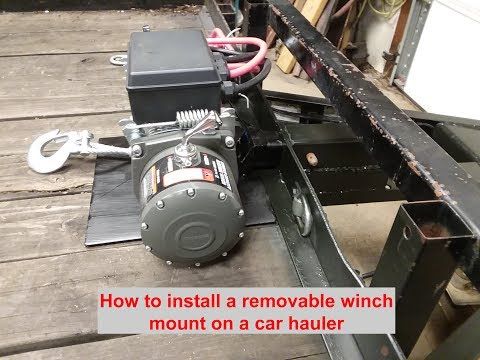 For 2018 Ranger XP 1000 models, the stock plow catch must also be removed.
For 2018 Ranger XP 1000 models, the stock plow catch must also be removed.You’re done with the easy part of your UTV winch install! All that’s left is the wiring.
How to Wire a Black Ops WinchNow that you have the winch plate mounted and tightened up, it is time to wire the winch. Follow the diagram below to make sure you’ve got it right. If you swap the positive and negative wires, the winch will spool out when you press “in” and spool in when you press “out.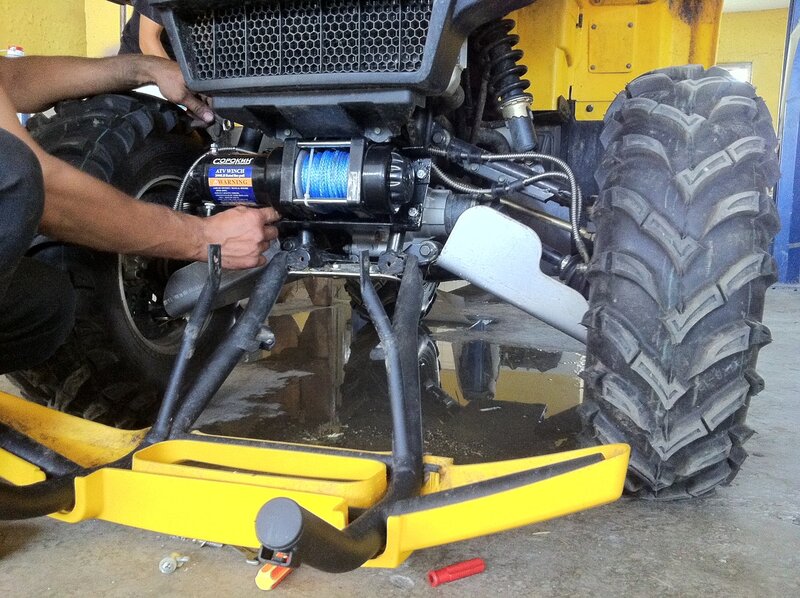 ” It’s not the end of the world, but it’s still nice to get it right the first time.
” It’s not the end of the world, but it’s still nice to get it right the first time.
Here are step-by-step instructions for installing your winch on a Full-Size Polaris Ranger.
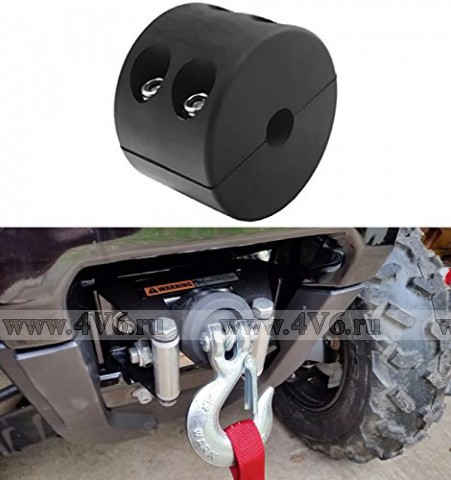
After you’ve finished installing everything, you can reattach any trim and/or bumper parts.
If you’re looking for even more precise winch installation instructions, check out our full-length UTV winch install video.
Congratulations! Your winch is now installed and you’re ready to get dirty!
ATV winches are powerful, reliable, and compact little units that can pull a substantial load. The most common mounting position is at the front of the vehicle at knee height. But there may be times where alternative mounting positions or winch orientations would suit your specific need better.
In this post, we’ll be looking at installing an ATV winch up-side-down, installing a winch on the cargo racks, or rear-mounted on the hitch receiver.
The compact yet powerful ATV winch features also make them attractive alternatives when you need some DIY pulling power on your truck bed.
Sometimes you may not be able to find a suitable mounting spot for the winch in its standard orientation. But then you notice that if you turn the winch upside down, it fits perfectly. This leaves the question: Can an ATV winch be mounted upside down?
Most ATV and UTV winches can be mounted upside down, as long as you make sure the rope or cable still spools in on the side of the drum closest to the base of the winch. There are exceptions where the winch manufacturers do not recommend mounting the winch upside down. Refer to the installation manual or ask the manufacturer directly to ensure your specific model can be mounted in the desired orientation.
There are exceptions where the winch manufacturers do not recommend mounting the winch upside down. Refer to the installation manual or ask the manufacturer directly to ensure your specific model can be mounted in the desired orientation.
Since no one answer fits all to this question, I asked some of the major winch brands if their ATV and UTV winches can be mounted upside down and if there are any special considerations you need to take into account for a successful install.
According to Warn, most of their ATV and UTV winches can be mounted upside down if needed.
The gears and brake mechanism will work fine regardless of which way the winch is oriented.
Warn offers winch mounting plates that are designed specifically for various ATV and UTV models. Some of these plates do mount the winch upside down.
Warn truck winches mounts either with the foot facing down or the foot facing forward. In both cases, the cable should spool in from the bottom of the drum.
This does not necessarily mean that a truck winch cannot be mounted upside down, but you should refer to Warn for advice on your specific model.
According to Superwinch, you should not mount any of their ATV winches upside down. They did not specify why they provided this recommendation.
According to Smittybilt, you can mount their ATV winches upside down, as long as you make sure the winch is operating in the same direction and rotation as it would if mounted right side up.
For ATV owners based in Europe, I find that UK-based WinchMax provides the best deal if you’re in the market for a budget-friendly alternative to Warn.
I asked Winchmax, and they replied that there is no problem to mount the winch upside down, as long as the rope is fed onto the winch drum in the same way as when mounted in the normal orientation – under the drum.
Here are a few things to consider for a successful winch install if you plan on installing your winch upside down.
The single most crucial aspect of installing a winch upside down is making sure the winch rope or cable still spools according to the user manual’s directions.
Always spool the rope or cable to the drum from the drum’s side closest to the base of the winch.
Normal winch rope winding.In normal orientation, this would be from the bottom of the drum. When the winch is mounted upside down, the rope or cable should spool from the drum’s top.
To achieve this without changing winching direction, you need to flip the winch sideways with the motor facing the opposite side.
If you install the winch so that the cable spools on the wrong side of the drum, you introduce excess forces that the winch and mounting bracket were not designed to handle.
Either the winch solenoid or motor housing may have drain holes to drain out any water that may enter. Some Warn winches have drainage slots built into the drum support.
When you flip the winch upside down, the drainage will end up at the top of the winch, where it will do no good.
Consider making new drain holes or relocating the solenoid so that it remains in the correct orientation.
Electric winches use one of two gear styles to transfer the motor’s power to the winch drum; planetary gears or worm gear.
Planetary-style winches use grease to keep the gears lubricated. The grease will stay on the gears regardless of the winch orientation.
Worm gear winches, however, use oil to keep the gears lubed. When you turn this style of winch upside down, the oil may no longer be able to reach the gears, causing them to wear fast.
You could also get oil leaks, as the gearbox is only designed to be used in a specific orientation.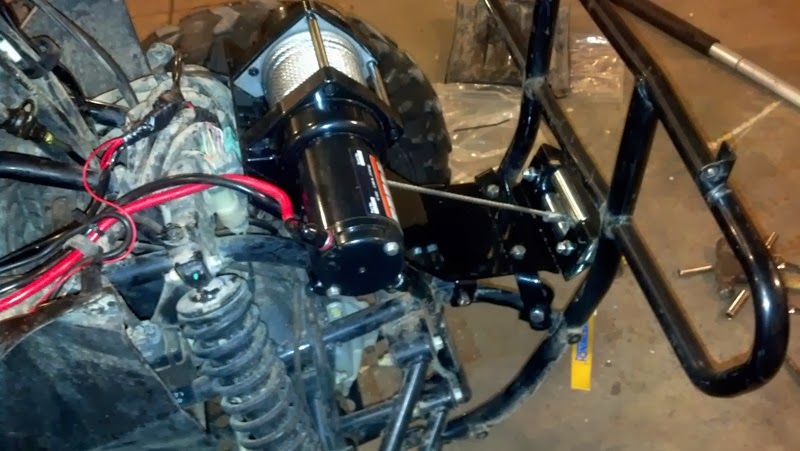
Note: Some winches are designed to operate feet forward, while others are designed to operate feet down. Refer to your user manual to determine if your winch needs to be in a specific orientation to work properly.
The engagement lever or knob is usually placed for optimal access when the winch is oriented with the drum on top. When you flip the winch, you may find that the lever ends up in an awkward position, making it hard to operate.
With the drum at the bottom of the winch, it may become harder to visually make sure the winch rope spools back nicely onto the drum and not on one side, possibly causing a jam. Here are 6 ways to untangle a stuck or jammed-up winch.
Technically you can make the electric DC motor in your winch turn in the opposite direction by reversing the polarity, but that does not mean you should.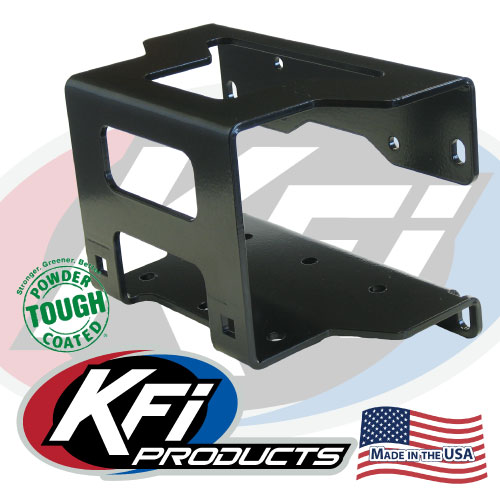
The winch has an automatic brake to hold back when spooling out under load and hold the load when the winch motor is not activated.
The brake on all planetary gear winches and some worm drive winches are designed to work in only one direction.
If you switch direction, the brake will no longer be able to hold back as you winch out.
Also, when you winch in, you will be overpowering the brake that keeps trying to stop the drum from turning. This will cause the brake to wear fast or fail.
Note that some worm drive winches have brakes that can be reversed to operate the winch in a different orientation. Refer to your user manual to learn if your winch has this feature.
Installing the cable in the opposite direction may cause a loose cable and possibly damaging it, causing it to break.
The gears in most winches are optimized to handle higher stress loads in only one direction as you pull in.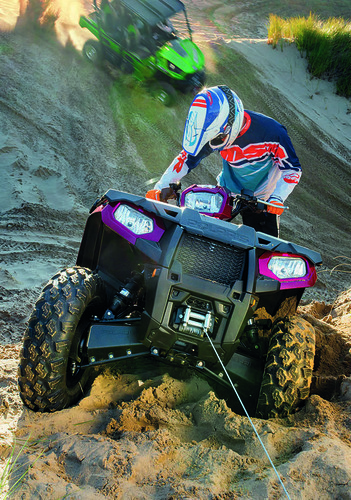 If you switch the motor’s direction, you will stress the gears in which direction they are designed to free spool outwards.
If you switch the motor’s direction, you will stress the gears in which direction they are designed to free spool outwards.
On some but not all winch motors, the brushes are designed to pull in a specific direction. The engine may still work if you reverse polarity, but it will not perform optimally.
Winding the drum in the opposite direction would fix the issue with the rope being at the drum’s top.
But this should be avoided as it will cause many of the same issues as hardwiring the winch motor to run in the opposite direction. The most critical issue being brake failure.
Most winch user manuals include a clear warning against switching winching direction.
Check this post to learn how to properly install a winch rope or caple to the winch drum.
Mounting your ATV winch to the hitch receiver can be a good option if you’re looking for a solid yet detachable rear mounting position for the winch.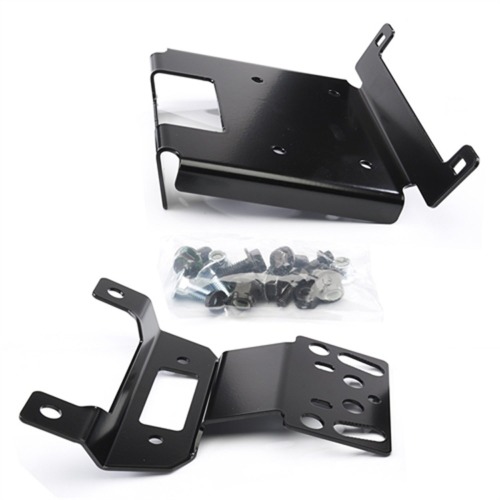
Many manufacturers offer brackets that will fit your winch and attach straight to your ATV’s two-inch receiver.
Make sure to get some extra same gauge cable like the one that came with your winch, along with some heavy-duty quick connect plugs. By using plugs, you’re able to remove the winch when not in use quickly.
I would rather use the hitch receiver as a mounting spot as most cargo racks are not designed to handle a winch pulling load.
However, some manufacturers offer brackets for specific models, such as this one for a Yamaha Grizzly.
An ATV winch can be a nice accessory to pull, let’s say an ATV, onto your truck’s truck bed. However, it will require some mechanical know-how, as you will have to fabricate a bracket to hold the winch in place.
Make sure you make the bracket strong enough to handle the rated pulling power of the winch. This video will give you some ideas on how to go about a project like this.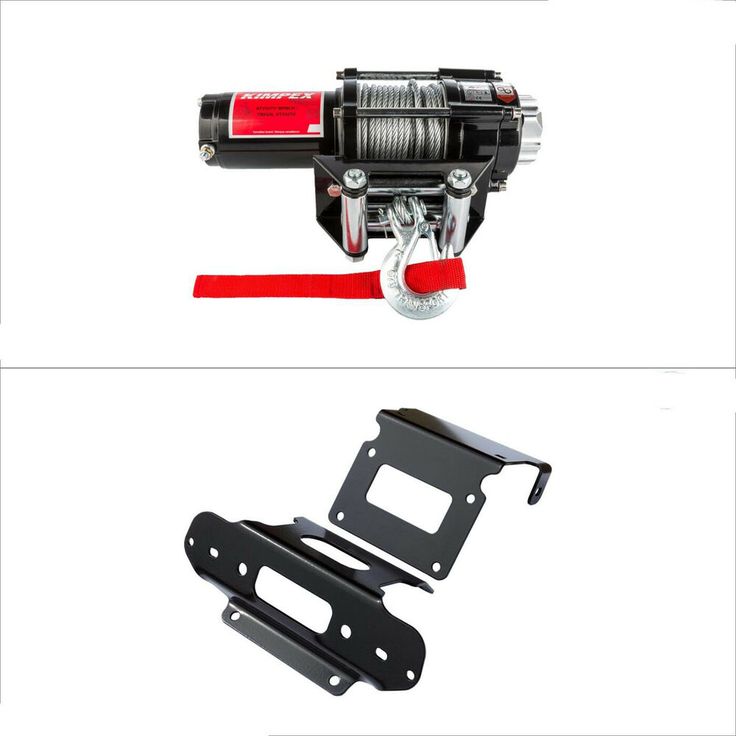
There should be no issues using an ATV winch on a truck, as long as the truck is not too heavy for the winch rated towing capacity.
A small ATV winch on a large truck will not work, while a larger ATV winch on a small or medium-sized winch may be a good alternative.
Check out this post to learn what size winch you should get for various vehicle sizes.
For extreme off-road ATV riders, an electric winch is a real lifesaver when stuck in potholes and mud. The electric winch is very easy to install and operate, it is controlled by a remote control, which is installed on the steering wheel of the ATV. Most importantly, such a winch will not require much physical effort from you to pull out the ATV. It has an electric motor powered by a battery. When choosing, you need to proceed from engine power and tractive effort. It is recommended to choose a winch with a pulling force of 1.5-2 times the weight of the ATV. And how to install, connect and use it, we will tell in this article.
It has an electric motor powered by a battery. When choosing, you need to proceed from engine power and tractive effort. It is recommended to choose a winch with a pulling force of 1.5-2 times the weight of the ATV. And how to install, connect and use it, we will tell in this article.
Electric winch is a drum with an electric motor. To connect it to the battery, the kit includes an electric unit and a set of wires, with the help of which the battery and the winch are connected. The control panel can be wireless and wired, which is also connected to the unit.
To mount the winch to the ATV, you need a platform, brackets, bolts and clamps. The kit also includes a roller lip, and a cable complete with a hook may also be included.
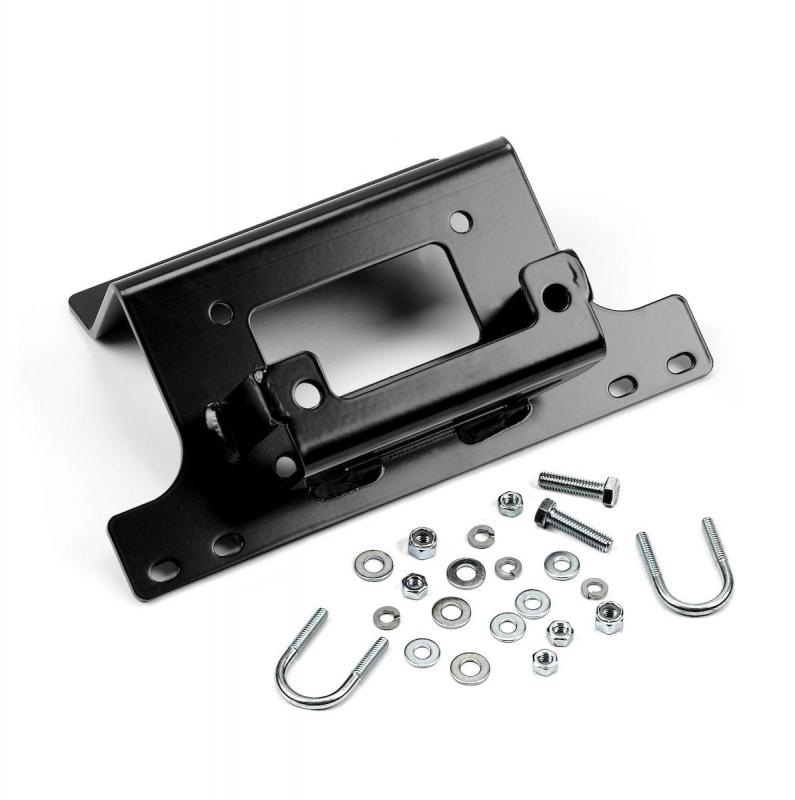 The platform, as a rule, comes with a winch, but if it is not available, you can make it yourself from a metal plate with a thickness of at least 4.8 mm. It is mounted on the frame with bolts of different sizes, it can also be welded to the frame.
The platform, as a rule, comes with a winch, but if it is not available, you can make it yourself from a metal plate with a thickness of at least 4.8 mm. It is mounted on the frame with bolts of different sizes, it can also be welded to the frame. The electrical box is recommended to be installed slightly away from the winch, but most often it is installed on the site.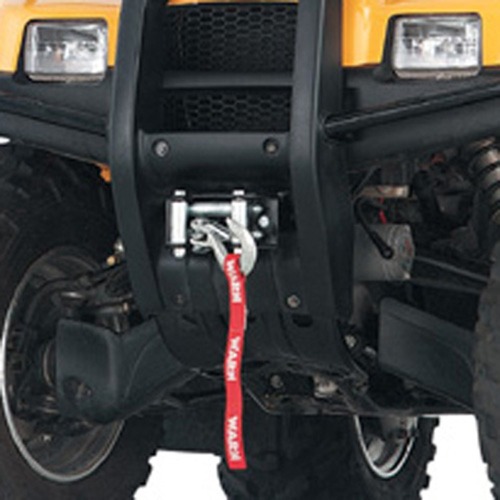 Next, we connect the power cables in accordance with the connection diagram specified by the manufacturer in the product data sheet.
Next, we connect the power cables in accordance with the connection diagram specified by the manufacturer in the product data sheet.
We connect the control panel and install it on the ATV steering wheel. It is recommended to pull the wires tightly, excluding their friction with other parts. They also need to be protected with cable corrugations.
Next, we fix the roller lip to the platform using bolts. And you can assemble all parts of the ATV back.
Once you've installed your electric winch, it's worth testing it out on level ground before driving it off-road. Using a winch requires certain knowledge and compliance with safety rules. Below, we will tell you what you need to know when pulling an ATV out of a hole or mud with a winch.
 In particular, if the winch has a steel cable, it is forbidden to work without thick leather gloves. In addition, clothing or hair must not be allowed to get on the winch drum. It is advisable to wear non-slip shoes and a hat.
In particular, if the winch has a steel cable, it is forbidden to work without thick leather gloves. In addition, clothing or hair must not be allowed to get on the winch drum. It is advisable to wear non-slip shoes and a hat. 
Important!
When working with a winch, all safety rules specified in the equipment passport must be observed.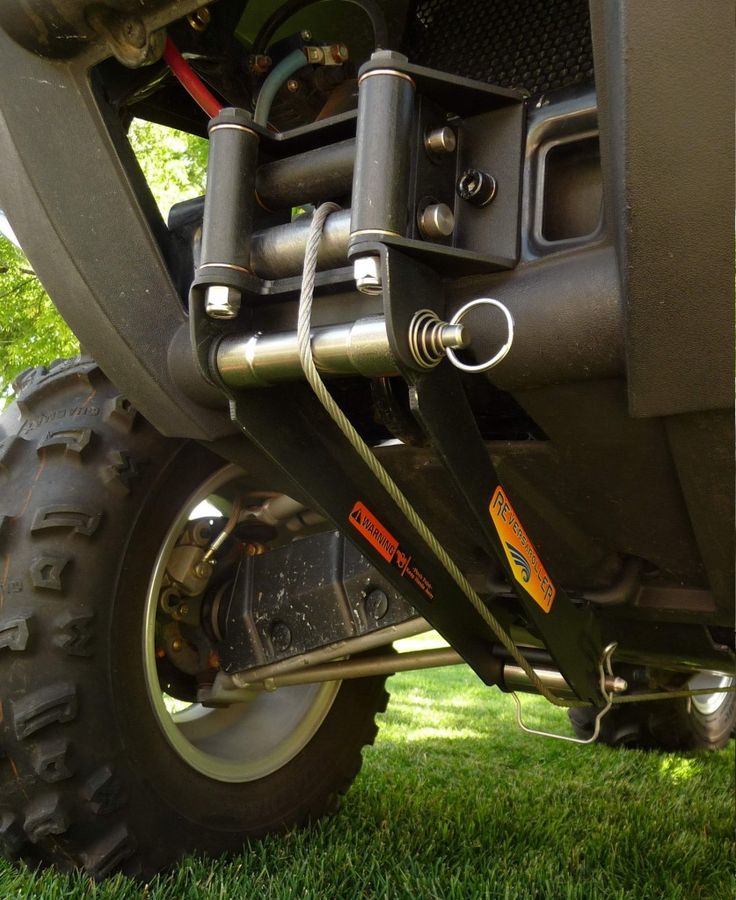 You must not approach the cable and winch in working condition and allow other people to approach it. It is necessary to use a cable damper, as in the event of a break, it can damage people and objects around.
You must not approach the cable and winch in working condition and allow other people to approach it. It is necessary to use a cable damper, as in the event of a break, it can damage people and objects around.
Before use, you need to make sure that all elements are in working condition, that they do not have breaks or damage, and that all fasteners are fixed sufficiently securely.
After using the winch, it must be cleaned of dirt, dried and lubricated with special oil.
A winch is a must have when traveling off-road. It allows you to pull a stuck ATV out of mud, water or deep ruts. Many models of CFMOTO ATVs and ATVs have a winch from the factory, for others it needs to be purchased separately. In this article, we will tell you how the winch works, what to look for when choosing, and also give useful tips on how to use it.
The ATV winch is a drum with a cable. An electric motor is located on one side of the drum, and a gearbox on the other.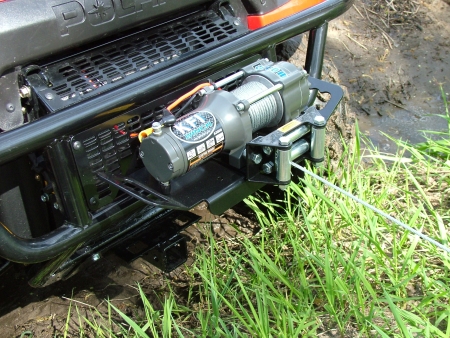 Rotation from the electric motor to the gearbox transmits a shaft that passes inside the drum. The gears of the planetary mechanism are located in the gearbox.
Rotation from the electric motor to the gearbox transmits a shaft that passes inside the drum. The gears of the planetary mechanism are located in the gearbox.
Reducer reduces speed and increases traction. The rotation from the gearbox is transmitted to the drum, which winds the cable, creating traction and gradually pulling out the stuck equipment.
One of the key parameters to consider when choosing a winch is traction. It determines the maximum weight of the load that can be torn off the surface. With each skein of the drum, the winch force decreases.
Thrust is measured in pounds (labeled on winches as lbs), 1 lb = 0.45 kg. The force depends on a number of features: the diameter of the drum, the number of wound turns, the power of the electric motor, as well as the gear ratio of the gearbox.
It is not always necessary to choose the most powerful and fastest winch: the more powerful the mechanism, the more difficult it is to handle. Beginners can harm equipment and even their health - it is not uncommon for a broken cable or a broken hook to cause injury.
Beginners can harm equipment and even their health - it is not uncommon for a broken cable or a broken hook to cause injury.
Suitable for ATV cubic capacity:
Steel - cheap and easy. Requires work with gloves, not repairable. May cause injury if mishandled.
Synthetic - requires maintenance but is easy to use. It does not "shoot", and if the cable is damaged or torn, it can be braided on the spot.
Most experts believe that material choice should be based on personal preference: some riders lean towards steel over time, others towards synthetics.
The winch is installed on a special platform on the ATV frame. If there is no platform, you need to buy it and install it according to the instructions. The site has standard anchor points that fit classic winches up to 3,500 feet of pull.
If there is no platform, you need to buy it and install it according to the instructions. The site has standard anchor points that fit classic winches up to 3,500 feet of pull.
When choosing a winch, pay attention to the width of the drum:
With certain skills, you can modify the fasteners and install almost any winch - the main thing is not to make the fasteners "break" and not to strengthen weak points. If the ATV is under warranty, it is advisable not to touch the frame and buy a standard winch.
Installing the winch is easy, but the connection will have to be tricky. To lay the wiring, it is advisable to remove the plastic from the ATV. The winch must be connected to the control unit and battery.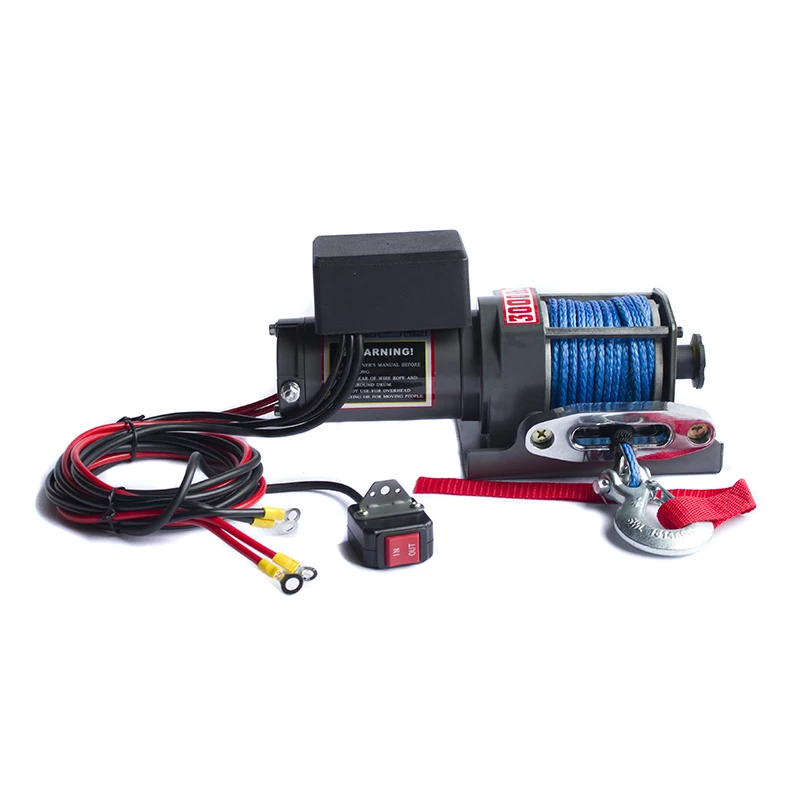 It is recommended to keep the power cable as short as possible to avoid current loss. All wires must be hidden in the corrugation so that they do not come into contact with the frame and are protected from moisture.
It is recommended to keep the power cable as short as possible to avoid current loss. All wires must be hidden in the corrugation so that they do not come into contact with the frame and are protected from moisture.

